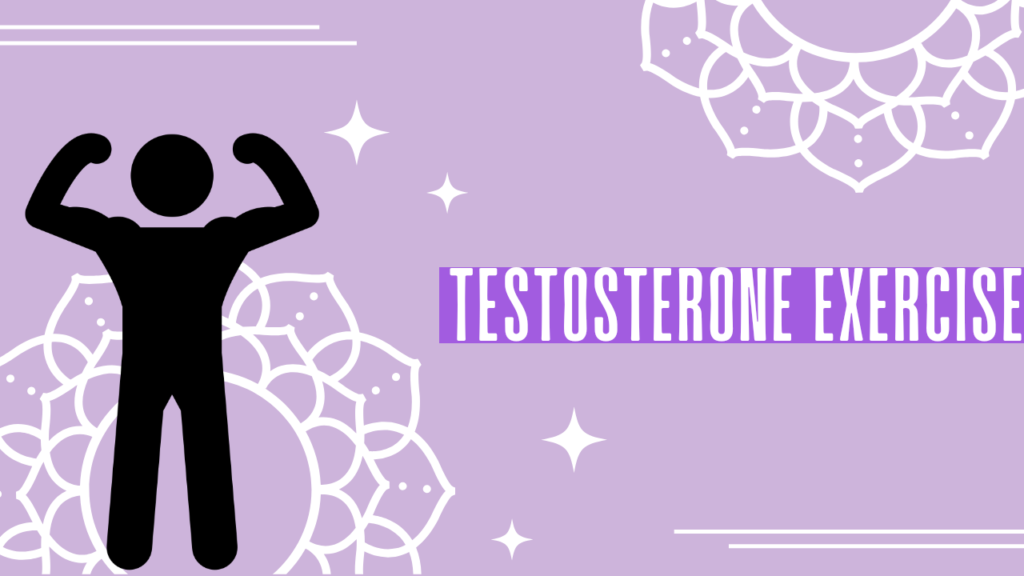
Introduction –
Exercise impacts the human body in multiple ways, including hormone levels. For men, exercising three to four times a week as part of a routine has been associated with a stable elevation in testosterone levels. As testosterone levels decline with age and sedentary lifestyles, many people opt for natural ways to maintain or boost them, and strength training tops the list.
This article explores how strength training doesn’t just sculpt your physique; it supports and stimulates your body’s natural testosterone production, enhancing overall health and vitality.
What Is Testosterone and Why Is It Important?
Testosterone is a sex hormone primarily produced in the male testicles, and to a lesser extent in the ovaries and adrenal gland of women. In males, it plays a crucial role in sexual development, sperm production, and maintaining muscle and bone health. It also plays an important role in fat distribution and contributes to the production of red blood cells.
Testosterone levels in males naturally decline with age, gradually starting at the age of 30. Decreased sex drive, fatigue, reduced muscle mass, and mood changes are some of the symptoms that are generally triggered by low testosterone, or Testosterone Deficiency Syndrome (TD) or Low-T.
The Science Behind Strength Training and Testosterone
Strength training is also known as resistance training. It helps in stimulating the body to produce more testosterone, particularly in the short term after a workout. Strength training exercises, particularly weight-lifting, play a vital role in testosterone production, muscle repair, and hormonal response. Various studies have shown that strength training is one of the most effective natural ways to stimulate testosterone production.
When the body engages in resistance training like squats, deadlifts, and bench press, it responds by increasing the secretion of anabolic hormones, including testosterone and growth hormone. Many studies have also shown that high-intensity, high-volume resistance training leads to acute spikes in testosterone levels.
How Strength Training Stimulates Testosterone
Strength training exercises like weight-lifting lead to microscopic tears in the muscle fibre, to which the body responds with the release of testosterone. This plays a key role in protein synthesis, muscle repair and rebuilding muscle tissues. The muscle repair process initiates a hormonal cascade, with testosterone being a major component in optimising muscle recovery and growth.
The impact of compound exercises like squats, deadlifts, and bench presses is powerful in the production of testosterone in males. Research has suggested that workouts with moderate to high intensity, higher volume (more sets and reps), and shorter rest periods between sets may lead to greater testosterone increases. Other factors need to be mentioned for people who seek for natural production of testosterone through strength training. A few factors, like age, body weight, and time of exercise, trigger the production.
1. Age: Younger men seem to get more of a post-exercise boost in testosterone as compared to older men.
2. Weight: Excessive body weight disrupts hormonal balance. By promoting fat loss, especially visceral fat, exercise naturally supports a testosterone boost.
3. Time of Exercise: Testosterone levels vary throughout the day. Studies have shown that the levels are typically higher in the morning and lower in the afternoon.As per research, instead of working out in the morning, evening strength training workout sessions help in boosting the testosterone level.
Best Practices to Maximise Testosterone Benefits from Strength Training
Following a proper strategy while strength training boosts testosterone levels briefly. Studies have suggested that while exercising, one has to focus on the key aspects of exercising, which include:
1. Rather than focusing on one exercise, use more muscles through full-body exercises. It helps boost the testosterone level in the body. Focus on compound lifts such as squats, deadlifts, rows, and bench presses, which engage multiple muscle groups and trigger a stronger hormonal response.
2. Avoid chronic overtraining, as excessive stress without adequate recovery can lower testosterone levels. Prioritise rest days, quality sleep (7–9 hours), and active recovery to allow your body to replenish hormone levels.
3. Nutrition is equally important for a testosterone boost. A diet rich in lean protein, healthy fats, and essential micronutrients like zinc and vitamin D supports natural production of testosterone.
Hydration and stress management also play a role in maintaining hormonal balance. By combining smart training with healthy lifestyle habits, you create the ideal environment for testosterone to thrive.
Lifestyle Synergy: Training + Habits = Better Hormonal Health
Not only for testosterone boost, but also for overall hormonal health, it is very important to maintain a healthy lifestyle along with strength training exercises, yoga and other forms of physical activities. To achieve good hormonal health, proper sleep, diet and stress management are very essential. Along with that, avoiding alcohol and processed food is also necessary. Strength training exercises can only be helpful when you follow these steps and make them a part of your routine.
Conclusion
Strength training exercises are not just about building muscle, it is also a powerful tool to boost the testosterone level in the body naturally. By engaging the body in regular high strength workouts, one can stimulate short-term hormonal spike and long-term hormonal balance.
But the benefits are not limited to the gym. Combining strength training with proper sleep, good food habits and stress management, it becomes a cornerstone of overall hormonal health.
In a world full of quick fixes and synthetic supplements, returning to the basics, lifting weights, eating well, and recovering smart offers one of the most effective and holistic solutions to keeping your testosterone levels strong and steady.